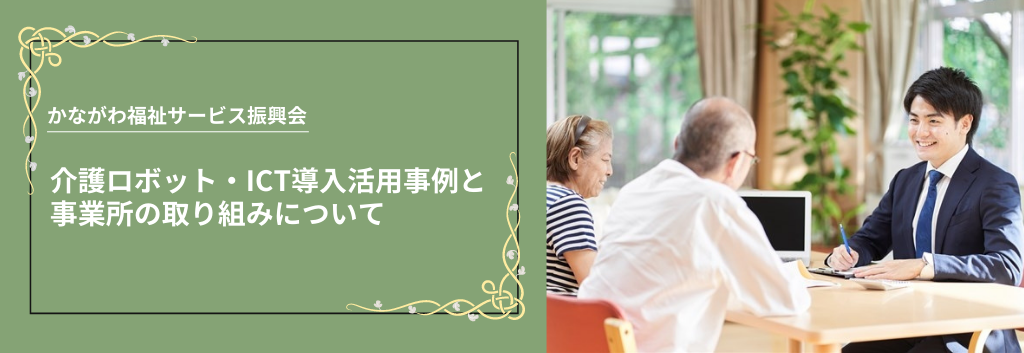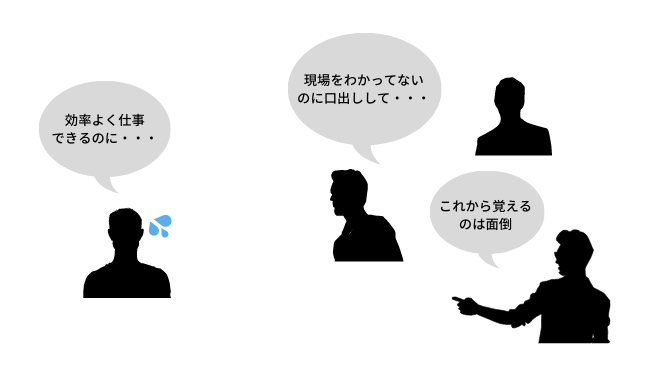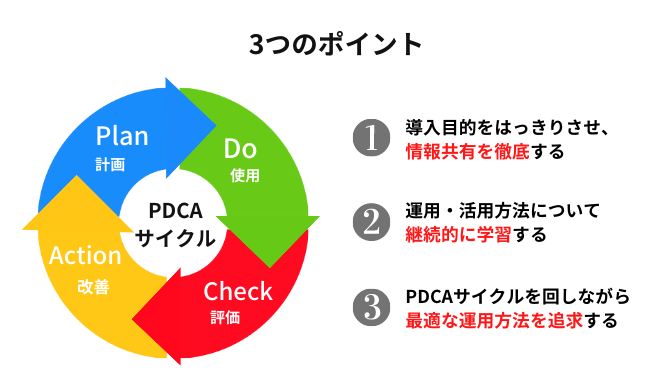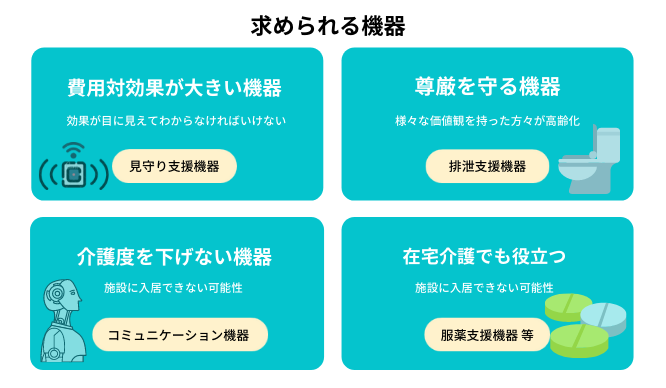
※本記事は、2022年2月24日に開催された「かながわ福祉サービス振興会 得永様」のウェビナー内容を基にしております。
ケーススタディ(介護ロボット・ICT機器を現場職員に受け入れてもらうには?)
ロボットやICT機器を使い、「入居者様もご家族様も安心して利用できる様、より良い環境にしたい」「職員も働きやすいような職場にしたい」などの管理者の意向がある中で、導入に対して抵抗感がある職員との意見に相違が生じることもあるかと思います。
そのような職員に対してどう対処すべきなのか、事例をもとにご紹介します。

~ ケース① 介護老人福祉施設 ~
[課題]
・OJTを実践する際の指導内容が統一されていないため、職員のレベル差が大きい
・職員の年齢は10~70代と幅広い
・業務が多忙な中、移動支援では、体重がある利用者に対して2名での介助が必要
・他の支援業務もあり
[施設長の想い]
介護ロボットなどの活用でスタッフの身体的な負担軽減を図りたい
[現場職員の反応]
「現在のスタッフで十分に対応できている」
「2名で利用者を移乗すればロボットを入れる必要がない」
「介護は人が介在しなくてもいいのか」
~ ケース② デイサービス ~
[課題]
・職員定着率が低い
・残業が多く、有給を消化できない
・一定の職員しか知らない情報があり、休むと様々な業務に支障が出る
・連絡帳の記入を手書きで行っており、終わるまでに2時間以上かかってしまう
[施設長の想い]
ICTの活用で業務を効率化し、より質の高いサービスに繋げたい
[現場職員の反応]
「新たなソフトを導入することで大変になる」「負担になる」「辞める」とまで申し出た職員もいた
~ 解決のポイント ~
介護ロボットやICT機器の導入を現場スタッフに受け入れてもらう為には、下記4つが必要となってきます。
1. 無理強いをしない
現場職員が何を思っているのか、適切な対処法は何かを考える。
導入ありきで話を進めると、仮に導入に至ったとしても活用において支障が出る。
2. 目的は同じ
「課題」について棚卸できているか。
手段は異なるが、「質の高いサービスを提供したい」「ご家族を安心させたい」「職員の負担を軽減したい」
等目的は同じであることを伝え、管理者と現場職員でベクトルを合わせることが重要である。
3. 導入ありきではない
仮に、反対され導入を見合わせることがあっても、一緒に悩み、質の高いサービス提供を目指すことが重要である。
それにより信頼感が生まれ、次回同じような機会が訪れた際に耳を傾けてくれるようになる。
4. アウトプットを明確にする
ICT導入や活用の意義・効果について、明確に説明する。
管理者自身が理由を説明できなければスタッフの賛同を得られない = 自身が理解していない可能性も疑う。
ロボット・ICT活用における施設の人材育成
これからは、「一億総介護」の時代です
世間一般では少子高齢化に伴い、就業人口が減っていると言われており、もちろん、介護現場においても、人材不足が深刻化すると予想されます。
そのため、介護ロボット・ICT機器の活用は福祉の現場では不可欠ではないかといわれています。
介護ロボット・ICT機器の導入・活用における4つの課題
1. 職員間で情報共有が十分にできていない
2. 人材育成や組織づくり、体制整備ができていない
3. 導入に対して抵抗がある
4. せっかく導入しても使いこなせない
課題を解決し導入・活用するには・・・
・前提条件をすり合わせる
なぜ導入するのか、本当に介護ロボットの活用はできるかなど、すり合わせる
経営層と現場の温度感に差が出てしまうことがあるため、しっかりベクトルを合わせる必要があります
・課題整理
導入ありきではないことを踏まえたうえで、以下3つの観点を整理します。
・負担軽減なのか
・CS(顧客満足度) or ES(従業員満足度) なのか
・経営支援なのか(そもそも人の採用が難しくなってきているのか)
・導入、運用までの5つのステップを実施
STEP1 目標設定
・管理者とスタッフ間の課題共有
・活用するご利用者、職員のリストアップ
STEP2 情報収集
・補助金情報など、導入において有益な情報をできる限り収集
・費用対効果を事前に検証
STEP3 導入計画
・使用計画、トレーニング体制を策定
どのフロアで、どういったときに使うのか?詳細を決める。
・機器操作の練習
職員が異動・退職した場合を考慮し、複数人関わったほうがよい。
使用後は、機器に対する評価を行う。
STEP4 導入
・搬入日の調整
・事業者内での研修・教育を行う
可能であれば、メーカーへ研修を依頼する。
STEP5 運用
・PDCAサイクルを常に回していく
使い方は正しいのか等運用の見直しを行う。

2030年や2040年頃に介護現場で求められるロボットとは?
2030年頃には・・・
社会保障財政のひっ迫、介護人材の不足に伴い、施設介護と在宅介護の両輪で支える社会システムへと移行していきます。
それにより、要介護状態を作らない、悪化させない社会へと変化し、生活自立支援、介護者の作業効率化、業務負担軽減を図る機器が、今よりも一層必要不可欠になります。

2040年以降では・・・
これまでは1施設1機種が一般的ですが、2040年以降では自動運転車いすをベースに基本的な介助作業はすべてロボットに代替され、施設入居者は介護士の介助なしで、自ら入浴・排泄・散歩等可能になることでしょう。


